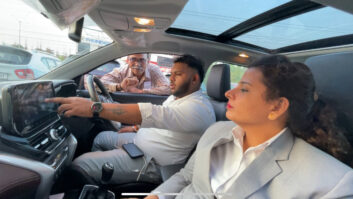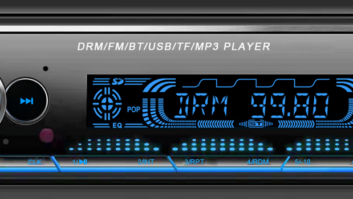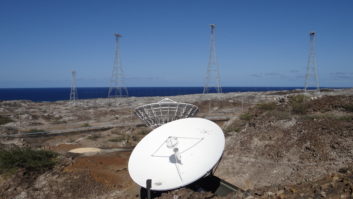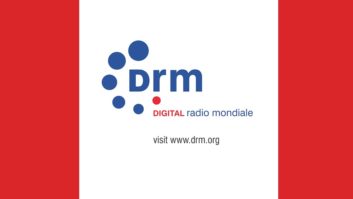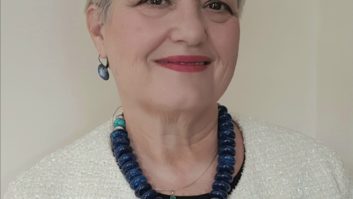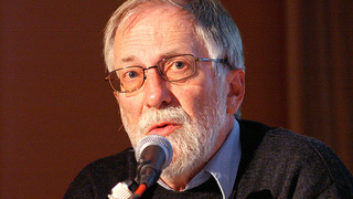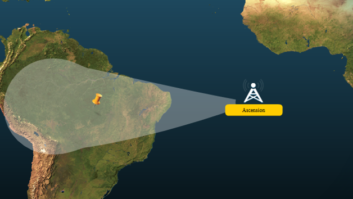Though the Digital Radio Mondiale standard has yet to achieve its potential — and the DRM Consortium is trying to make receivers more affordable and more widely available — this has been a busy year for the open digital broadcast standard.
Among recent highlights: The International Telecommunications Union approved DRM+, the standard for transmissions above 30 MHz. DRM+ has been successfully tested most recently in the U.K., Italy and India.
The DRM Consortium in collaboration with Fraunhofer unveiled a multi-standard HD Radio, DAB/DAB+/T-DMB and DRM chipset for cars in January at CES. NXP designed and manufactured the chipset. New receivers were shown at the IBC and Asia-Pacific Broadcasting Union Delhi conferences.

Image courtesy of Nautel Eight radio chipset manufacturers have become DRM members, bringing the membership to more than 100. Other DRM members include Continental Electronics, Nautel Ltd., Fraunhofer IIS, the BBC and Thomson Broadcast. All India Radio has doubled its DRM broadcast hours to 16.5 hours per day.
Voice of Nigeria has begun DRM tests on shortwave and Moscow radio has begun DRM MW broadcasts. In fact, the DRM Consortium released its first guide to the DRM standard in Russian in May, the first comprehensive DRM users’ guide the consortium has produced in a language other than English.
Currently, some 600 hours of DRM programming are broadcast every week, reaching about half of the world’s population, according to the consortium.
The years of hard work on DRM seem to be reaching critical mass, according to Hal Kneller, a regional sales manager for Nautel who’s also a member of the DRM executive board.
“With important news out of India where shortwave and medium-wave [AM] rollouts are underway, as the entire country converts to DRM, the consortium is confident that India will create a huge market for receiver manufacturers. With the leadership of the receiver task force, the commitment of the India government and All India Radio, and the chips etc. folks behind all of this, we could well see a big breakthrough for DRM.”
DRM architecture permits up to four program channels per frequency, giving broadcasters multilingual capability or the opportunity to reach out to niche markets and audiences. Multimedia applications like Journaline, a Unicode-based text information service, and TPEG/TMC, a traffic information system, enable additional information to be sent via terrestrial broadcasts.
One of the biggest challenges for DRM30, an open digital standard for frequencies below 30 MHz, seems to be the availability of inexpensive receivers. DRM Consortium Chair Ruxandra Obreja said at the NAB Show that fewer than 4,000 receivers have been built, and many of these are software-based.
About DRM Founded in 1998 to promote adoption of the Digital Radio Mondiale standards worldwide, the DRM Consortium is a non-profit organization with 100 members, including broadcasters, manufacturers, regulators and research institutes.
DRM is an open digital radio standard for all frequency bands. DRM30 covers frequencies below 30 MHz, including the LW, MW and SW bands.
DRM+ is for frequencies above 30 MHz, including the FM broadcast band.
Countries with regular DRM30/DRM+ service include Austria, France, Germany, India, Australia, Canada and the UK. Trials and/or decisions to use DRM30/DRM+ are underway in Denmark, Hungary, Nigeria, China, Brazil, Mexico and the U.S.
In developing nations, cost is a key factor in deployment. The least-expensive receiver is selling for $100, while the goal is to bring the retail price down to $50. Success comes down to economy of scale. Allen Liang, sales vice president of Chengdu Newstar Electronics, said, “If an order of 5,000 receivers is placed, that price can drop to $75. A $50 price point is possible for larger orders.”
FUNDING LIMITS
Obreja, who also heads the digital radio development for the BBC World Service, said part of the problem lies in a lack of vision on the part of some governments.
“They are spending considerable money to build stations which transmit DRM30, but are unwilling to subsidize a DRM receiver company.” She said many religious broadcasters build and donate receivers to listeners to build an audience, a concept that could be adopted in the DRM community. Since the DRM+ standard only recently has been approved, no receivers are in production, although prototypes have been developed.
The DRM Consortium has developed “feature profiles” for manufacturers. These specify the minimum functionality to be expected for both standard and rich-media radio receivers. Standard receivers offer DRM reception in medium-wave, shortwave and FM bands, stereo decoding, as well as the emergency warning feature and text message display. Rich media receivers also include Journaline, electronic program guide and slide show presentations. There is also a receiver that can display Diveemo, a small-scale video application that can be broadcast over DRM30. Newstar Electronics DR111 standard and Uniwave rich media DRM receivers were displayed at the NAB Show.
DRM30 also can be used for program distribution and as a bridge to FM technology. Radio New Zealand International installed a 100 kW DRM shortwave broadcast transmitter in Raingitaiki in 2005. RNZI broadcasts 20 hours per day in DRM to all the Pacific islands. Receivers on the islands convert the RNZI signal to FM.
RNZI’s low-power DRM-FM rebroadcast systems include an outdoor setup and may be solar-powered. A minimum of infrastructure is required, as the DRM receiver chipset includes two FM exciters. On smaller islands, a self-standing system is employed, while the RNZI rebroadcasts are integrated into local programming at the larger stations. The system provides two FM channels for local services.
DRM is the only digital broadcasting system designed to operate in the shortwave bands (3-30 MHz), and as the spectrum has become more crowded, there has been interest in using frequencies above 26 MHz for DRM30, according to the DRM Consortium. The ITU-R Working Party 6A has studied the concept.
The 26 MHz band is a 430 kHz wide broadcasting service allocation at the upper end of the high-frequency range, providing forty-two 10 kHz (or 21 x 20 kHz) channels that are currently allocated for broadcasting. International broadcasters however tend to favor the lower frequency broadcast bands below 21 MHz, partly because low-cost HF receivers do not pick up the 26 MHz band, and partly because there are few times in the 11-year solar sunspot cycle when the band supports long-range propagation.
Therefore, part of the band may be available for local broadcasting. Coverage of an entire metropolitan area or a small portion serving a specific community is feasible.
The result of using low-power “line of sight” transmission systems in the 26 MHz band is a coverage area similar to that of a Band I (47–88 MHz) transmission. An additional benefit of the band is that manmade noise levels are usually much lower than those found in the MW band.
